
Old Elizabethan and global internet celebrity Jay Shetty continues to make headlines as he pursues his quest to ‘make wisdom go viral’ – and one of his recent podcast shows he has not forgotten his QE roots.
 Through his bi-weekly motivational podcast, On Purpose, which was ranked number 1 in the CNET media website’s recent list of the ten best health & fitness podcasts, Jay (OE 1999–2006) dispenses serious advice from doctors, successful business people and other guests.
Through his bi-weekly motivational podcast, On Purpose, which was ranked number 1 in the CNET media website’s recent list of the ten best health & fitness podcasts, Jay (OE 1999–2006) dispenses serious advice from doctors, successful business people and other guests.
Issued every Monday and Friday, the podcast is so popular that it has also become a magnet for celebrities, too: recent scoops included an interview last month with Khloé Kardashian in which she discussed her relationship with her ex-partner and father of her baby, Tristan Thompson.
Closer to home, Jay this month re-tweeted a recent episode in which he paid warm tribute to his QE Art teacher, Stephen Buckeridge, during an interview with American gym and fitness entrepreneur, Payal Kadakia.
In the course of a discussion about mentors, Jay said this about Mr Buckeridge, who is now QE’s Head of Art: “This man changed my life. First of all, I was a rebel at school. I was the worst kid from 11-18 – not grades-wise, in terms of just being a rebel, trouble-maker…I was suspended three times, asked to leave.
 “Mr Buckeridge was one teacher who always stood by me, never judged me. The most important lesson he gave me was every time we did any art – whether it was collage, whether it was graphic, whether it was charcoal, fine art – whatever it was, no matter how good it looked, his question was always ‘Why did you do that?… Why did you put that colour next to that colour? Why did you put that brush stroke versus this one?’ He would always ask me ‘why, why, why, why, why?’
“Mr Buckeridge was one teacher who always stood by me, never judged me. The most important lesson he gave me was every time we did any art – whether it was collage, whether it was graphic, whether it was charcoal, fine art – whatever it was, no matter how good it looked, his question was always ‘Why did you do that?… Why did you put that colour next to that colour? Why did you put that brush stroke versus this one?’ He would always ask me ‘why, why, why, why, why?’
“…It took me years to recognise that he had coached me in always looking at the meaning and the ‘why’ – without me even knowing.”
On leaving QE, Jay went on to Cass Business School in London, from which he graduated with a first-class degree in Management Science. Then, however, his life took an unusual turn: he spent three years as a monk in India in the Hindu Vedic tradition, which accounts for his later sobriquet of the ‘urban monk’.
His career began to take off when he was spotted by Arianna Huffington and brought to New York, where he rapidly gained a following for his daily show, HuffPost Live #FollowTheReader.
Jay featured in the influential Forbes European 30 Under 30 in 2017 and his social media channels attract huge followings: some of his videos have now had over 1 billion views.

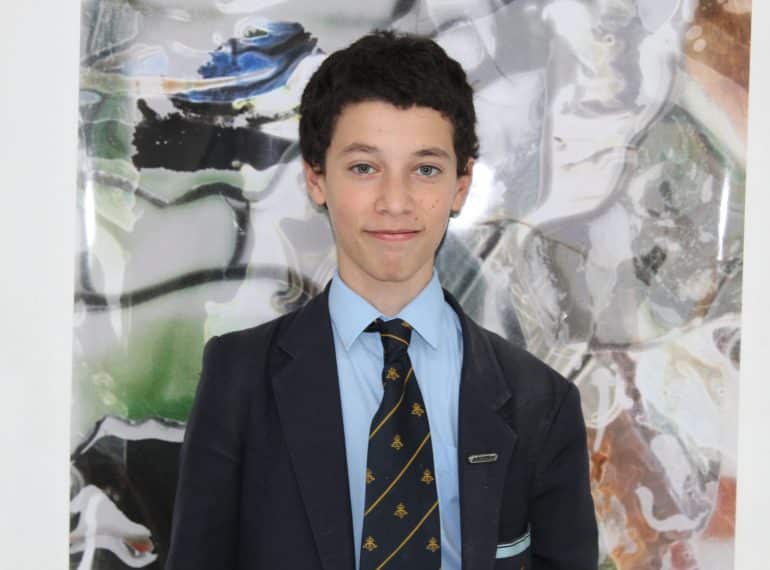
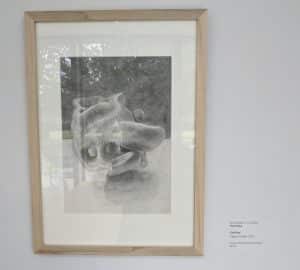 His untitled artwork is on display until 1st November at the Visitor Centre at the Henry Moore Studio and Gardens in the Hertfordshire hamlet of Perry Green.
His untitled artwork is on display until 1st November at the Visitor Centre at the Henry Moore Studio and Gardens in the Hertfordshire hamlet of Perry Green.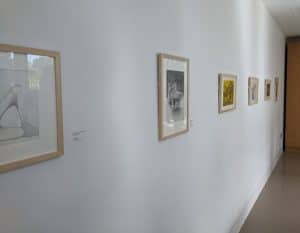 Entries were required to reflect themes in Moore’s art: reclining figure; mother and child; natural forms, or life drawing. They had to be submitted on paper or card, with the majority of the work being drawn, not painted.
Entries were required to reflect themes in Moore’s art: reclining figure; mother and child; natural forms, or life drawing. They had to be submitted on paper or card, with the majority of the work being drawn, not painted.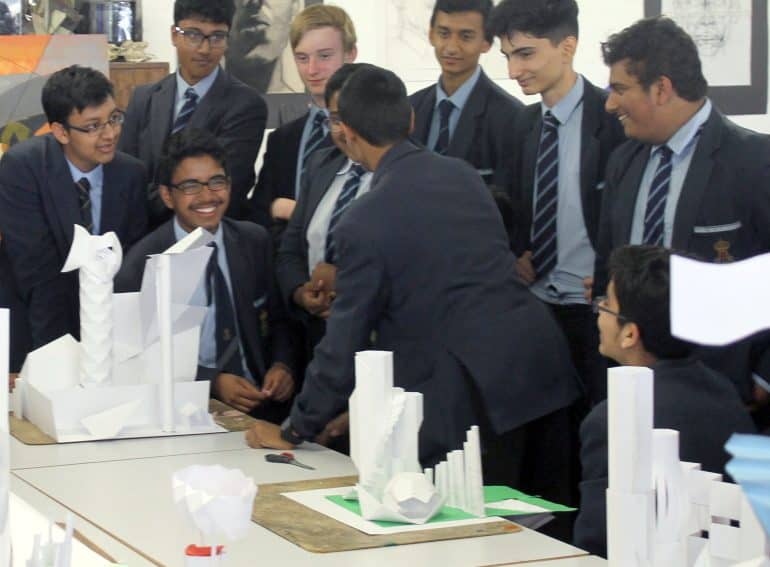
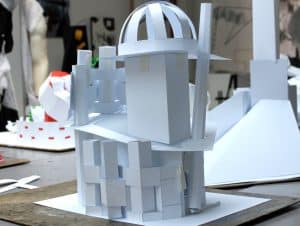 All 180 members of Year 10 were involved in the competition, which was held by the Art department as part of QE’s Enrichment Week.
All 180 members of Year 10 were involved in the competition, which was held by the Art department as part of QE’s Enrichment Week.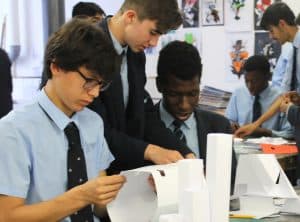 The entries created over the two days included models of museums, airports and mosques.
The entries created over the two days included models of museums, airports and mosques.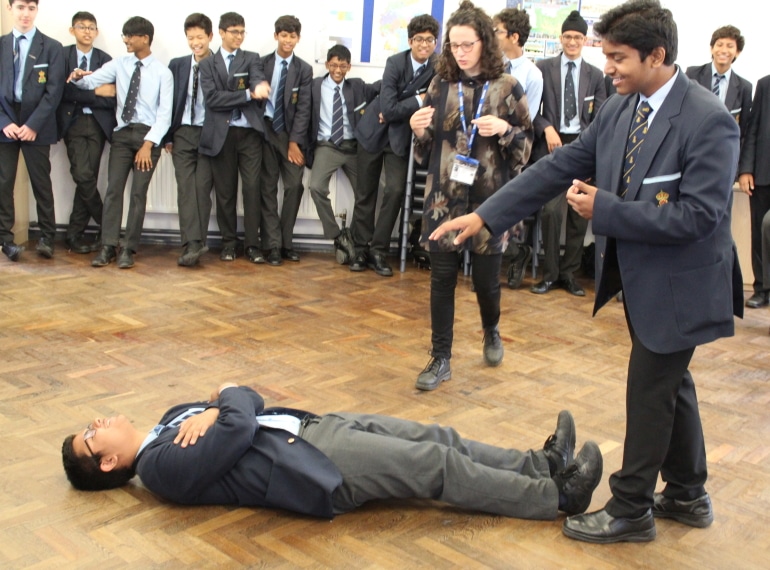
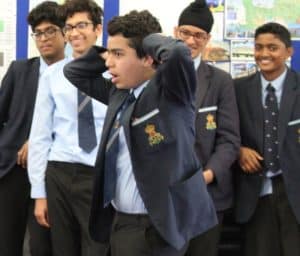 Featuring a series of interactive workshops, the day brought to life Shakespeare’s brooding and exciting tragedy, which most of Year 9 had studied – from a purely textual point of view – earlier in the year.
Featuring a series of interactive workshops, the day brought to life Shakespeare’s brooding and exciting tragedy, which most of Year 9 had studied – from a purely textual point of view – earlier in the year.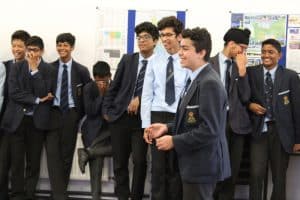 Mahmudur’s fellow Underne House member, Varun Maheswaran, said: “It was a fun day. When we played out the Macbeth scenes, it was enjoyable to explore the play in an interactive way.”
Mahmudur’s fellow Underne House member, Varun Maheswaran, said: “It was a fun day. When we played out the Macbeth scenes, it was enjoyable to explore the play in an interactive way.”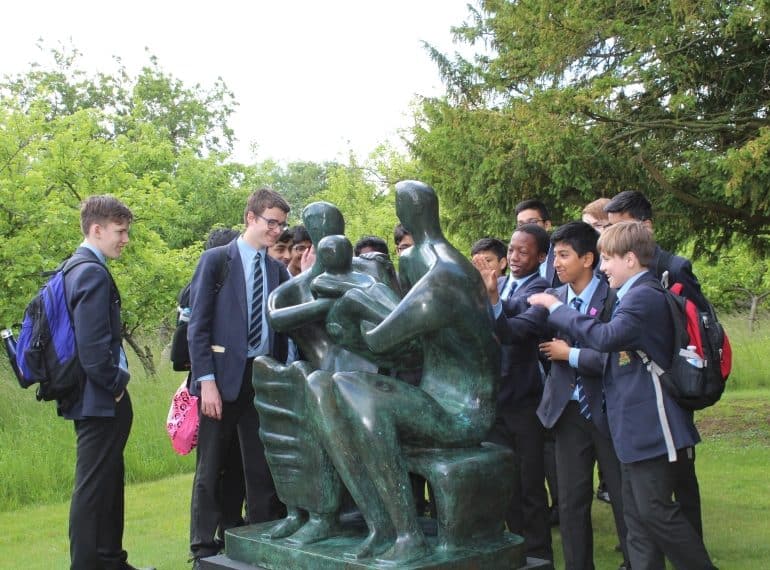
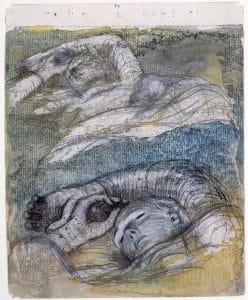 Not only did the Art trip give the pupils an opportunity to experience his spectacular outdoor sculptures in the beautiful grounds near Much Hadham, but they were also able to see the largest exhibition of his drawings in more than 40 years.
Not only did the Art trip give the pupils an opportunity to experience his spectacular outdoor sculptures in the beautiful grounds near Much Hadham, but they were also able to see the largest exhibition of his drawings in more than 40 years.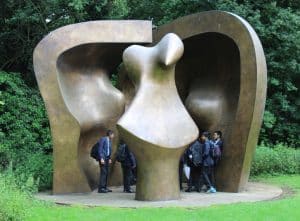 “The foundation displays a fantastic collection of his sculptural work. The students were taken on a tour of the grounds by informative guides who described the inspiration and construction behind these iconic pieces,” said Mrs McAteer.
“The foundation displays a fantastic collection of his sculptural work. The students were taken on a tour of the grounds by informative guides who described the inspiration and construction behind these iconic pieces,” said Mrs McAteer. The trip began with a tour of Moore’s larger sculptures, before the group ventured inside his numerous workshops to look at his smaller, finer work. Here, said Sai, they picked up tips for improving their own sculpting, such as incorporating the appearance of bones and using textures inspired by nature, such as bark.
The trip began with a tour of Moore’s larger sculptures, before the group ventured inside his numerous workshops to look at his smaller, finer work. Here, said Sai, they picked up tips for improving their own sculpting, such as incorporating the appearance of bones and using textures inspired by nature, such as bark.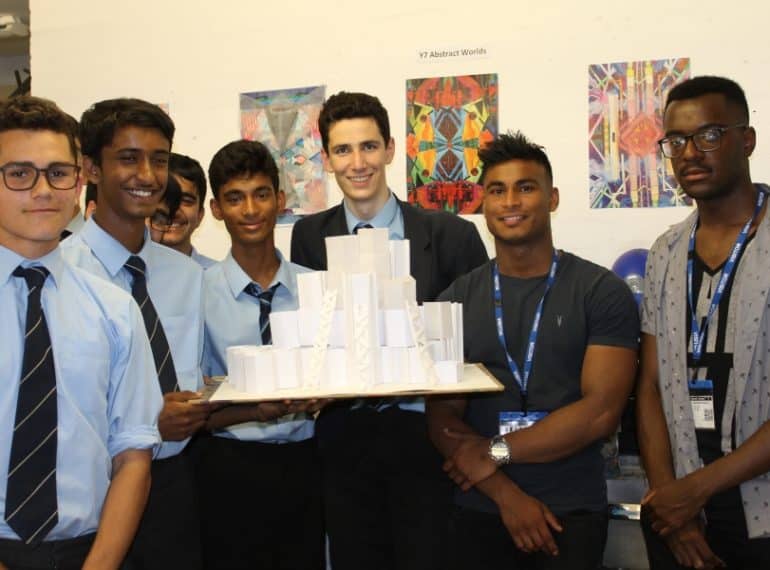
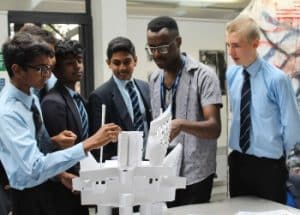 Two of 2017’s Year 13 leavers, Nabil Haque and Tochi Onuora, who are both studying Architecture at Cambridge, came back to help.
Two of 2017’s Year 13 leavers, Nabil Haque and Tochi Onuora, who are both studying Architecture at Cambridge, came back to help.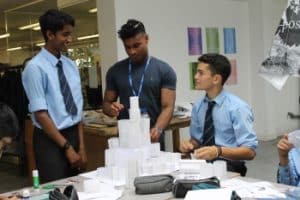 The pieces were judged at the end of the event. The Stapylton House team – comprising Alex Aliev, Nikhil Gulshan, Rakul Maheswaran, Jack Runchman, Aqif Choudhury, Riaz Kalim and Jude Miranda – won overall. Their contribution was praised for the way that it essentially used the same hexagonal shape repeatedly to build up the structure and create something very stable, yet still architecturally interesting.
The pieces were judged at the end of the event. The Stapylton House team – comprising Alex Aliev, Nikhil Gulshan, Rakul Maheswaran, Jack Runchman, Aqif Choudhury, Riaz Kalim and Jude Miranda – won overall. Their contribution was praised for the way that it essentially used the same hexagonal shape repeatedly to build up the structure and create something very stable, yet still architecturally interesting.